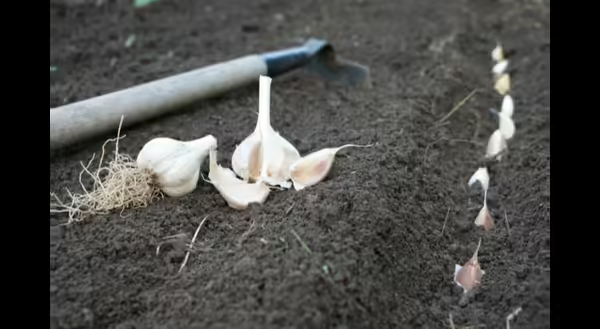
As the vegetable growing season quickly approaches fall frosts when production screeches to a halt, there is actually one crop that can be planted now in anticipation of next year’s growing season. Garlic (Allium sativum) is an easy-to-grow bulb crop that does best when planted now for a summer harvest next year.
Garlic is a perennial, meaning it is certainly cold hardy in our area. However, it must be divided, or replanted, annually to produce the large, store-bought bulbs we are used too. Interestingly, garlic is typically sold as a vegetable, although I consider its culinary use to be more like an herb.
Over the years, I have been thrilled at the productivity of this herb-like vegetable crop in my home garden. A year’s supply of garlic can be grown in a relatively small garden space, with relatively little care compared other, more high-maintenance crops.
Midwest growers typically replant garlic each fall to ensure chilling requirements and adequate growth in spring, prior to harvest in mid-summer. Garlic seed can be purchased from a number of suppliers or bulbs can be saved to replant in fall.
While garlic from the supermarket may also grow just fine in garden setting, I recommend purchasing a variety sold as seed garlic. The quality of the bulb at harvest is typically better from seed garlic since the common supermarket varieties may have been developed for storage life at the expense of taste.
Garlic is planted in the fall given that chilling is required to initiate bulbing and flowering in the subsequent growing season. For our area, mid-October is about the perfect time to plant garlic, which allows cloves to root and begin to sprout before freezing temperatures set in.
The planting process for garlic is pretty simple and involves breaking up garlic bulbs into individual cloves. Do not divide garlic bulbs until just before planting time as early separation of cloves has been shown to reduce mature bulb size at harvest. Generally speaking, the larger the clove at planting time, the larger the bulb at harvest. So, it pays to select the biggest bulbs possible for planting.
I typically till the area to be planted, although planting into a relatively weed free bed also works just fine. Similar to onions, garlic does not handle heavy weed pressure well, so any measure to reduce weed competition is beneficial. After planting, I typically apply a heavy layer of straw mulch, which helps insulate the soil and blocks out any weed seeds exposed during tillage.
Individual cloves should be planted in an upright position (pointy end up) approximately 3-5 inches apart and about 1-2 inches deep. Plantings can be done in rows that are spaced about 18 inches apart, with individual cloves spaced closer to 3 inches in the row. Or cloves can be planted 5 inches apart in all directions to create more of a patch-like planting.
I prefer rows, simply for easier access and the more orderly appearance of rows. Additionally, I find it easier to plant in rows because a 1-2 inch deep furrow can quickly be made by dragging a hoe through tilled soil. Cloves can then be placed in the furrow at proper spacing and with one last, quick swipe of the hoe, the furrow can be neatly filled in.
There are two types of garlic typically grown, known as hardneck and softneck garlic. Softneck garlic is the kind that you see woven into beautiful braids, since its shoots are more supple or “softer”. Whereas hardneck garlic is characterized by its much stiffer, more upright central stock that is quite rigid at maturity. Hardneck garlic has larger cloves that are easier to peel, but don’t last as long in storage. Softneck garlic has great storage life and since its leaves and shoots remain supple at maturity, it can be woven in to braids to facilitate storage and provide an interesting display of your harvest.
Garlic is somewhat of an outlier among the common vegetables with is odd, autumn planting time. However, I really enjoy putting cloves in the ground each fall as one last gardening activity before cleaning up the vegetable plots for winter. What better way is there to top off the gardening season and get setup for next year?